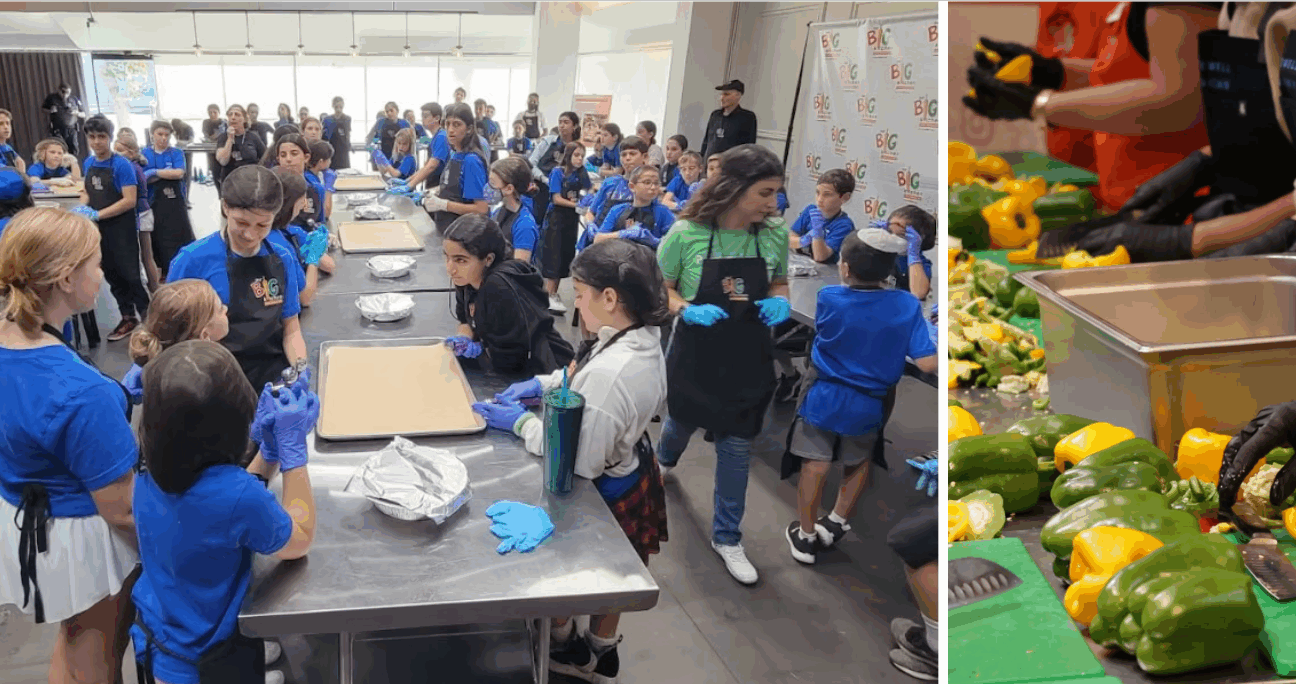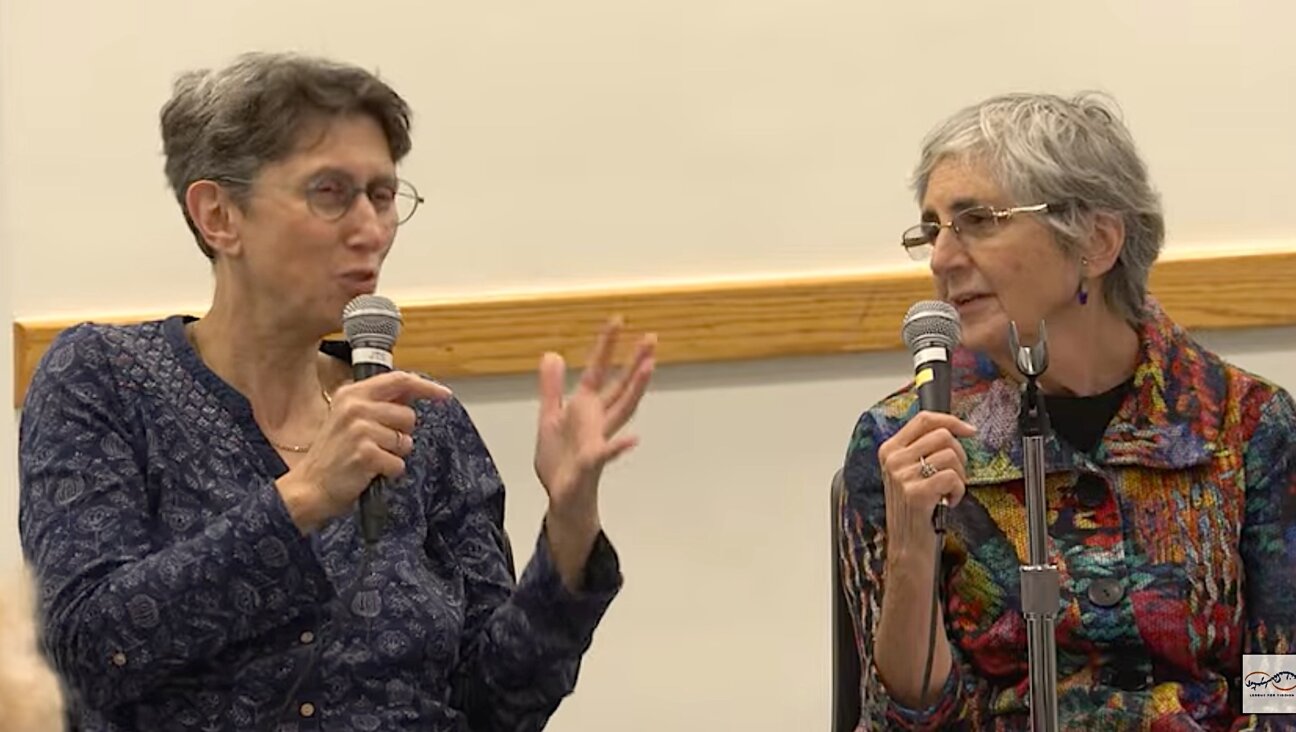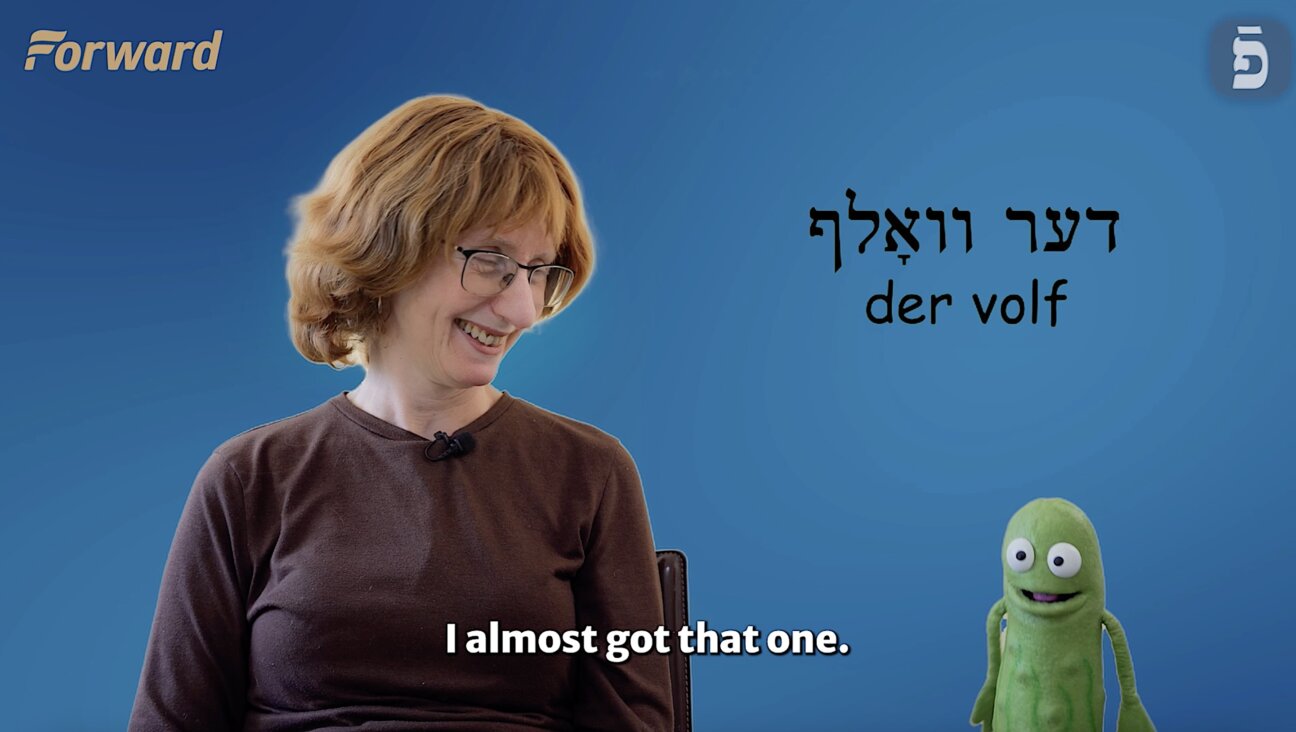‘Imaginary Coordinates’ or Community Coordinates?
The decision taken by Chicago’s Spertus Institute to terminate “Imaginary Coordinates,” a controversial exhibition on Israeli-Palestinian issues, has drawn plenty of media attention — and no small amount of criticism. But this is not an open-and-shut case of donor protests stifling a museum’s daring and creativity, as some have suggested. Instead, the core issue here is an ethnic museum’s responsibility to the community it serves as an educational resource and represents to the thousands of non-Jews who visit annually.
Throughout its 82-year existence, Spertus has carefully avoided controversy, earning for itself a unique place of near-universal respect and affection in the local Jewish community. On Christmas Day each year, hundreds of Jews, young and old and drawn from almost every segment of the community, flock to its building for “Something Else,” a program of lighthearted activities and kosher snacks. Reform Jews rub elbows with Haredim, suburban families mingle with downtown singles. Chicago’s Jewish federation may be able to get out large numbers to demonstrate their support for Israel, but only Spertus is able attract so large and diverse a gathering of Jews for no other reason than to enjoy a few hours in the company of other Jews. (Full disclosure: My former wife was employed by Spertus until a year ago.)
When Spertus moved to its new, state-of-the-art building six months ago, its leaders determined to take a new approach, opting to make it a vehicle for examining controversial issues. The decision, which moves Spertus into the mainstream of contemporary museum culture, was reached after extensive internal discussion. But little was done to involve the larger Jewish community in the conversation, or even to prepare it for what it would encounter in the new Spertus.
Consequently, Spertus’s usually savvy professionals and trustees failed to anticipate the firestorm set off by an exhibition of historic maps, some seeming to question the Jewish people’s territorial claims in the Middle East, alongside works by Israeli and Palestinian artists, a few of which wouldn’t have been out of place in a show mounted by an anti-Israel group. A glass case containing a “Paligirl” T-shirt and black shorts with “Palestine” emblazoned on the back greeted visitors at the entrance. A continuous-loop video showed a woman, displayed in full-frontal nudity, spinning a barbed-wire hula-hoop around her waist against a peaceful backdrop of a Tel Aviv beach.
Whether items of this nature are ever appropriate in a Jewish museum is a question being hotly debated post mortem. But there can be little doubt that open dialogue early on would have cautioned the museum’s planners that they were moving too fast; that opening the exhibition on Yom HaShoah would underscore allegations of insensitivity; and that timing it to coincide with Israel’s 60th anniversary was almost certain to ignite a conflagration that would consume reasoned discussion of the exhibition’s contents, thus defeating the museum’s purpose in mounting it.
But “Imaginary Coordinates” also came on the heels of other changes at Spertus that served to exacerbate communal suspicion toward the museum’s direction. The old Spertus was a traditional — some would say “old-fashioned” — Jewish museum. It displayed its extensive collection of Judaica on the building’s first floor, with signage explaining the objects’ origin and usage. Because even the most casual visitor learned something about Jewish history and practice, the museum served as an important educational resource for local Jews, as well as for thousands of non-Jews who come each year in organized school groups or as drop-ins pursuing a cultural itinerary that includes nearby institutions such as the Art Institute, Field Museum and Shedd Aquarium on Chicago’s famous Museum Mile.
In the new building, the permanent collection, now called “The Depot,” is moved to an upper floor, set off to the side of a far larger empty space available for party rental. The arc of floor-to-ceiling glass cases is imposing and visually stunning. But with no identifying labels or even numbers to direct people trying to follow a confusing audio program, the display is of very limited educational value even for people who know what they’re looking at, and of virtually no educational value for those who do not. Moreover, many of the objects are situated above an average person’s comfortable viewing range, making for an experience one local critic described as being akin to “bird watching without binoculars.”
Deracinating Jewish religious objects by displaying them solely for their artistic merit is offensive to many Jews. In Hebrew, these objects are called klei kodesh — vessels of holiness. And to make matters worse, very few of the 1,500 items now on display relate to Israel or Zionism.
It is impossible to assess in hindsight whether “Imaginary Coordinates,” taken by itself, would have generated a groundswell of sufficient enormity to force its cancellation. But the one-two punch of an exhibition widely perceived as being hostile to Israel, together with a permanent display that indicates a diminution in Spertus’s commitment to being an educational resource, was simply too much for the community to take.
Much to their credit, Spertus leaders have handled the situation with extraordinary mentshlekhkeyt, resisting any temptation to hurl accusations of censorship (which would be unfounded!), and expressing regret for the pain felt by many of the museum’s constituents. As one trustee put it, “Spertus is not interested in going around and hurting people’s feelings.”
The conciliatory tone of these words is gratifying. But let’s not throw the baby out with the bath water. An institution that serves a people with roots in biblical prophecy and talmudic debate should not fear controversy, even if it causes some hurt feelings. The question facing Spertus is not whether it should proceed on its new mission, but how. It took the fast track and got derailed. If it now heeds Hillel’s dictum in Pirke Avot about not separating oneself from the community, Spertus will find itself traveling on a slower track. But the community will be riding with it, and deriving enormous benefit from the journey.
Rabbi Ira S. Youdovin is executive vice president emeritus of the Chicago Board of Rabbis.
















